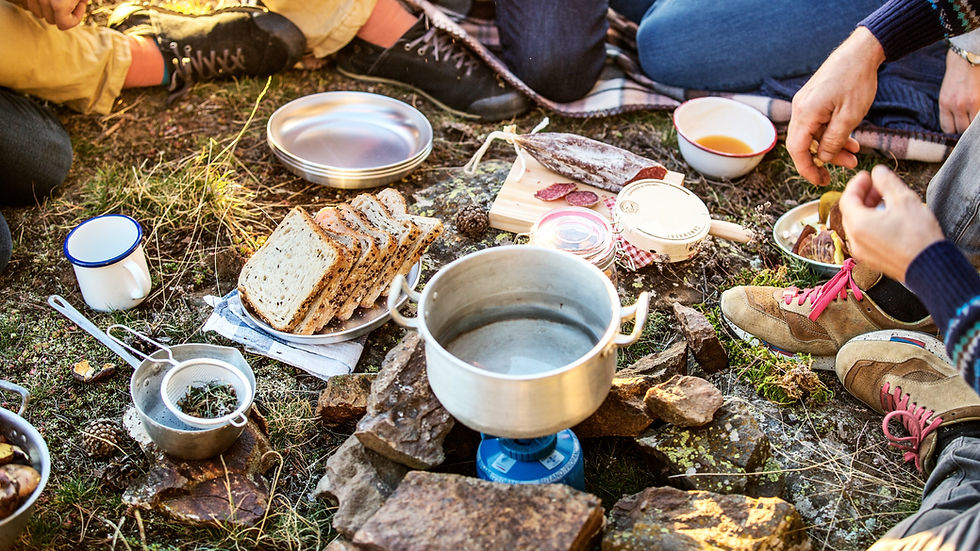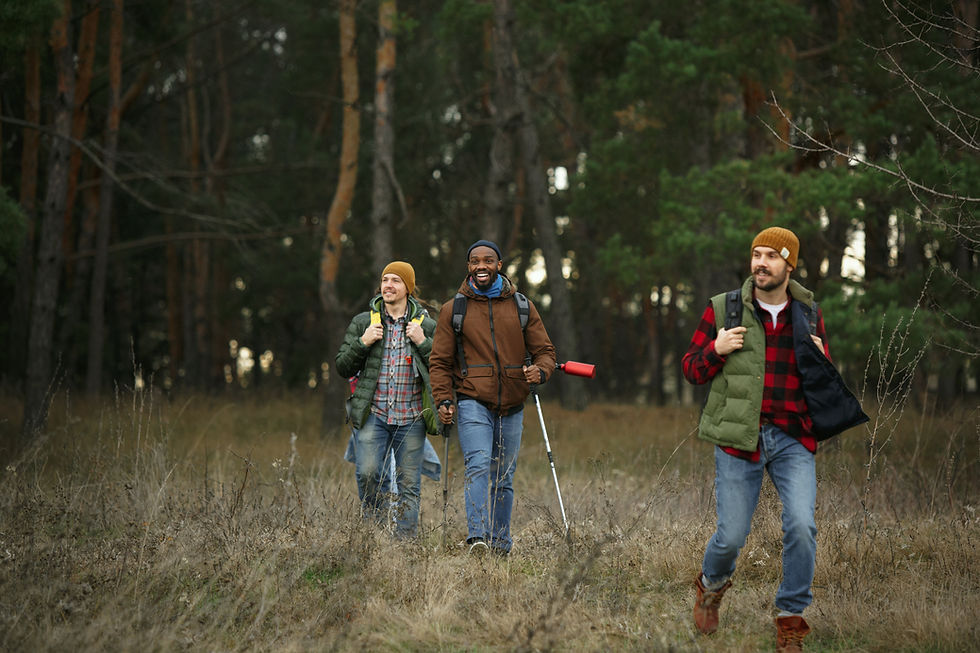How to keep food cold while camping
- Kern River's Edge Team

- Sep 5, 2022
- 3 min read
Updated: Sep 18, 2022

Camping is a fun, affordable way to get out and enjoy nature. However, if you're like most people, you probably don't want to come back from a camping trip with food poisoning. One of the challenges of keeping food cold while camping is that traditional refrigerators and ice chests use a lot of precious battery power or fuel. Fortunately, there are several ways to keep your food cold without spending all day at the campsite managing your cooler.
Let’s break down 3 simple tips on how to keep food while camping, so you can fully relax and enjoy your time in nature.
Use an ice block — not ice cubes
While nothing quite compares to the taste of fresh-caught fish, camping trips often require us to get a little creative when it comes to food storage. One way to keep your food from spoiling is to use an ice block (as opposed to ice cubes). Ice cubes melt much faster than an ice block, and you’ll find yourself with no cold storage sooner rather than later.
If you don’t want to pick up an ice block, you can make one yourself. To make an ice block, simply fill a large container, such as a rinsed out milk jug, with water and freeze it for a couple of nights. In the morning, wrap the container in a double layer of trash bags and pack it into your food’s storage container.
The ice will slowly melt during the day, but the trash bags will help prevent leaks. As the block melts, drain the water to lessen the melting.
As an alternative, you can also freeze a handful of water bottles and throw those into your storage container. These can be just as effective.
Keep Reading: How to beat the heat while camping
Keep it in the shade
If you don't have access to a fridge, your only option is to store your food in a cooler. However, even coolers can't keep food cold forever. If you're going to be camping in a hot climate, or if you're planning to go on a long hike, you'll need to take extra steps to keep your food from spoiling.
One way to do this is to store your food containers in a shady area. The cooler temperatures will help to keep the food inside from getting too warm, too fast. In other words, keep the container away from direct sunlight and underneath the shade of a big tree, camp table or RV.
Keep Reading: What to wear while camping
Not all items need to be in the same container
Any seasoned camper knows that one of the keys to a successful trip is keeping your food cold. No one wants to eat warm, spoiled food, after all. One way to ensure that your food stays cold is to keep the items you use regularly out of your ice chest. This will prevent you from having to open up the container more often than necessary, which can let in heat and hasten the melting of the ice.
Instead, you can keep a separate cooler for drinks and other perishables that you need to access frequently. Or, you can place these items directly on top of the container. That way, you can minimize the amount of time that your food spends in warm temperatures, helping to keep it fresh for longer.
Care-for-It
Recreating responsibly includes packing trash bags to leave our wild spaces cleaner than you found them. There is a glass ban in the Sequoia National Forest, so remember to use plastic storage containers, ziploc bags, or bota bags for camping gear and kitchen supplies instead of glass. Practice Leave No Trace principles and pack out what you pack in. See more Kern River camping tips.
Looking for more camping tips and tricks?
Then we’ve got you covered! Check out some of our additional resources to learn more about camping along the Kern River and how to camp like a seasoned pro!
Additional Resources:




Comments